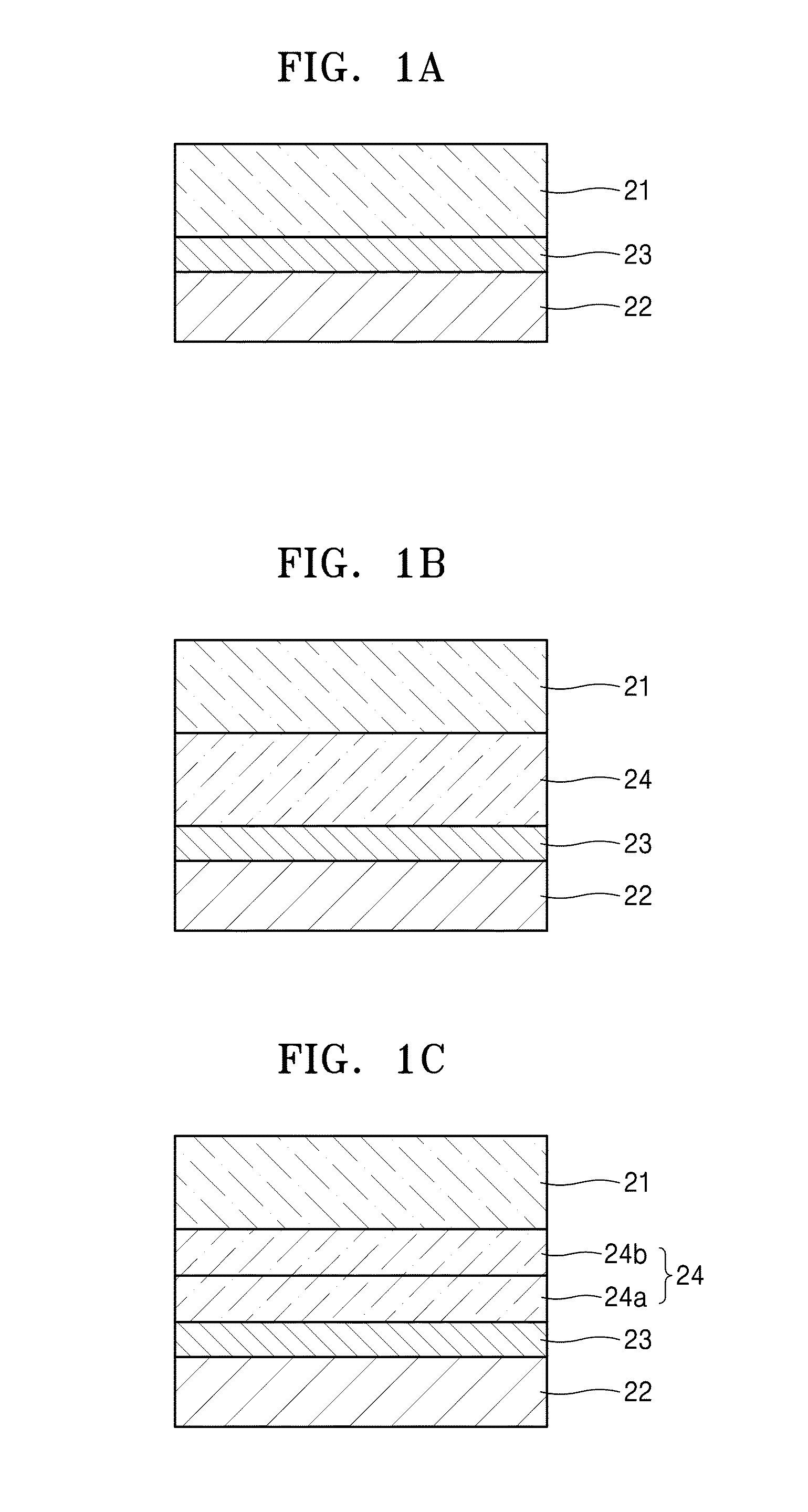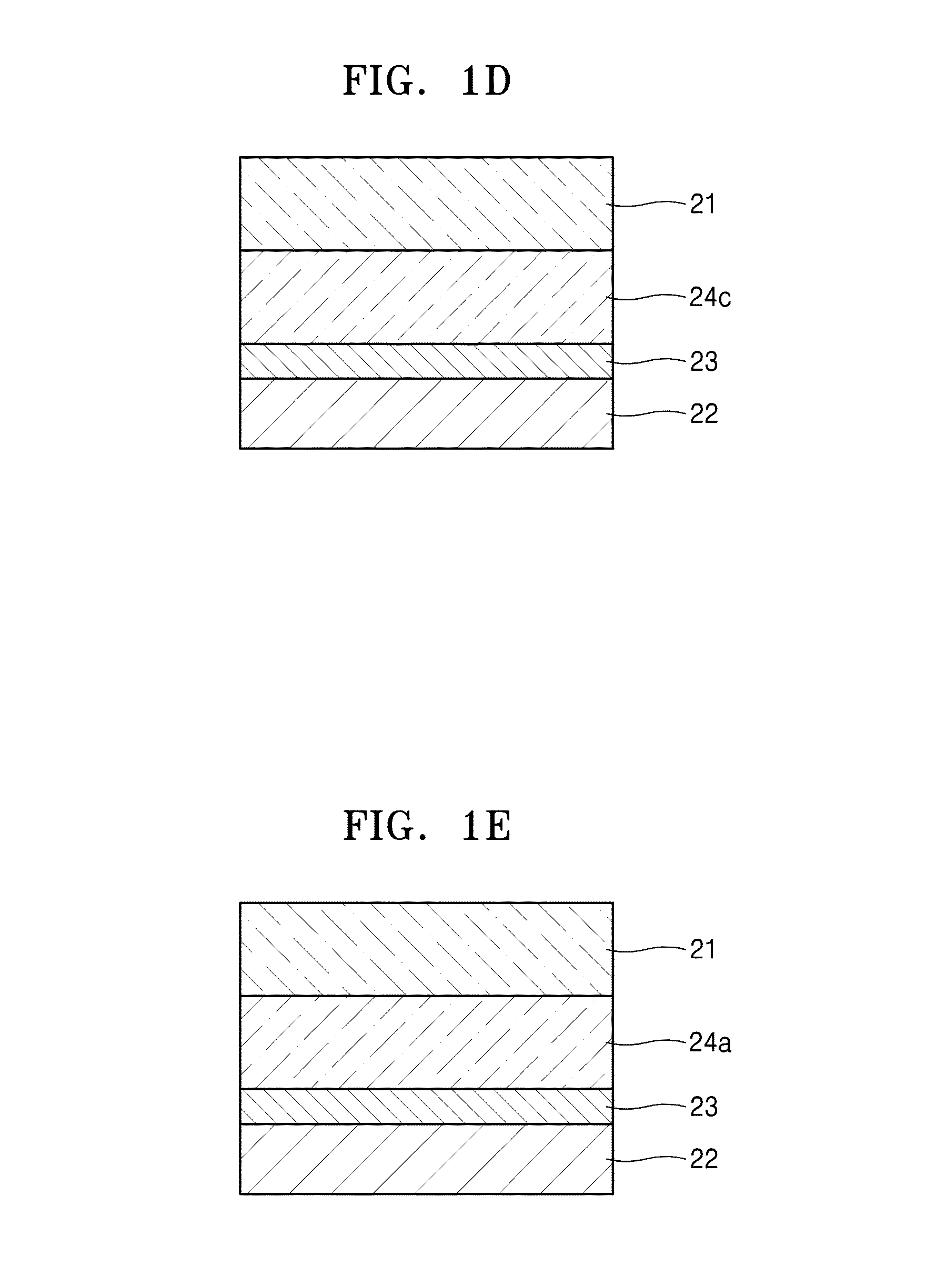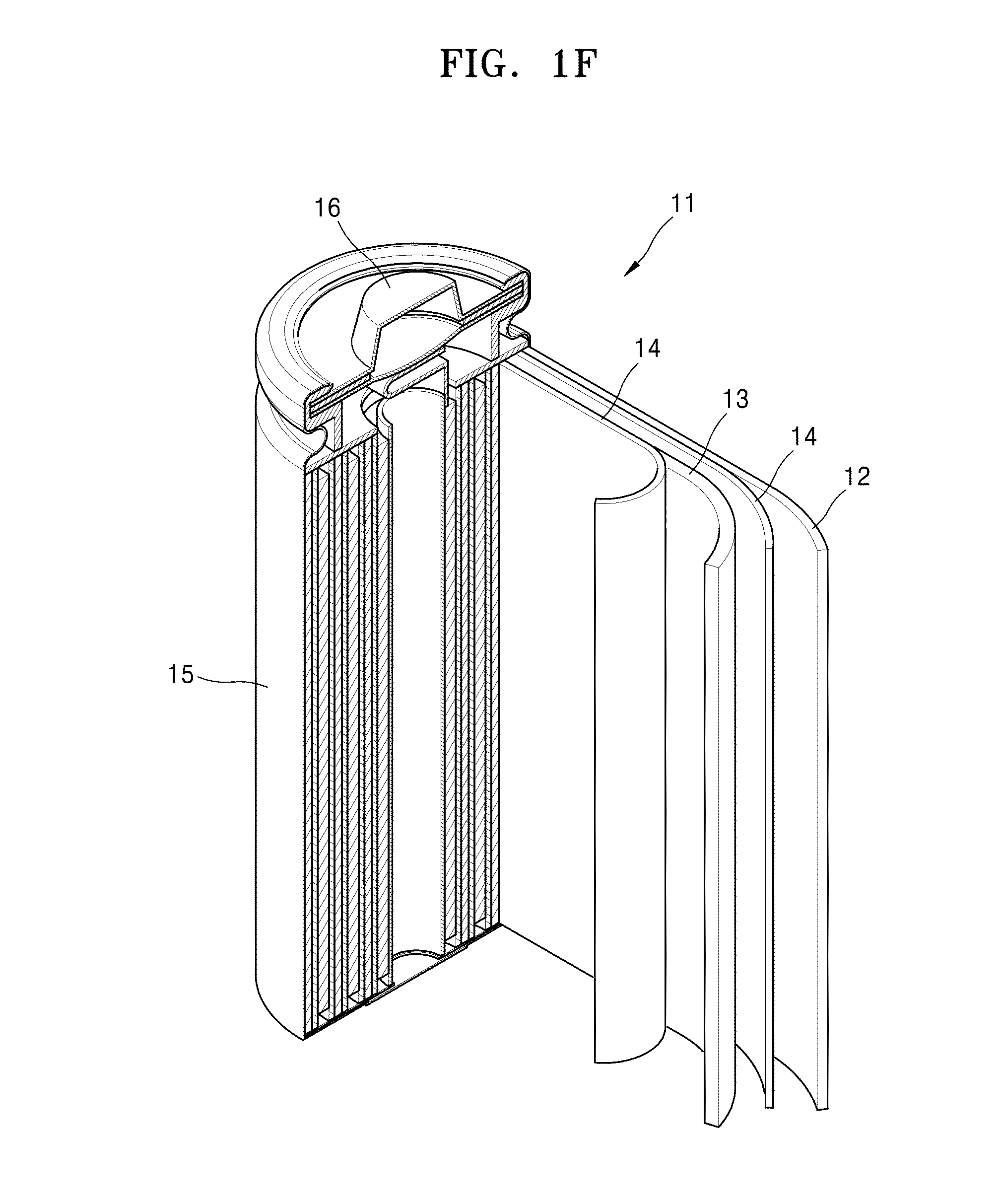Electrolyte, method of preparing the electrolyte, and secondary battery including the electrolyte
- Summary
- Abstract
- Description
- Claims
- Application Information
AI Technical Summary
Benefits of technology
Problems solved by technology
Method used
Image
Examples
example 1
Preparation of Electrolyte (S:DVB:1,6-HD=4:1:4 Molar Ratio)
[0295]Styrene (also, referred to as “S”), 1,4-divinylbenzene (also, referred to as “DVB”), and 1,6-hexadiene (also, referred to as “1,6-HD”) were mixed with PEO-CTA (having a weight average molecular weight of 104 Daltons and a polydipersity (Mw / Mn) of about 1.11) represented by Formula 12 to prepare a monomer mixture. Here, an amount of PEO-CTA of the monomer mixture was about 35 percent by weight wt %, and a molar ratio of styrene, 1,4-divinylbenzene, and 1,6-hexadiene in the mixture was 4:1:4.
[0296]In Formula 12, n was controlled so that a weight average molecular weight of the polymer represented by Formula 12 was about 104 Daltons.
[0297]N-methyl-N-propyl-pyrrolidinium bis(trifluoromethanesulfonyl)imide) [PYR13+TFSI−], which is an ionic liquid, and bis(trifluoromethylsulfonyl)imide (LiTFSI), which is a lithium salt, and polyethyleneglycol dimethylether (PEGDME) (having a weight average molecular weight of about 250 Dalto...
example 2
Preparation of Electrolyte (S:DVB:BA=2:1:2 Molar Ratio)
[0302]An electrolyte including a block copolymer {PEO-b-(S-co-DVB-co-BA)} represented by Formula 2a was prepared in the same manner as in Example 1, except that n-butyl acrylate was used instead of 1,6-hexadiene, and a molar ratio of styrene, 1,4-divinylbenzene, and n-butyl acrylate (wherein butyl acrylate is also referred to as “BA”) in the mixture was 2:1:2 (styrene:DVB:BA=2:1:2 at a molar ratio), in the preparation of the monomer mixture.
[0303]In Formula 2a, n was controlled so that a weight average molecular weight of the ion conductive phase block (PEO block) was about 104 Daltons, and m was controlled so that a weight average molecular weight of the block copolymer represented by Formula 2a was about 56,000 Daltons. Also, a, b, and c each independently denoted a mole fraction, and the sum of a, b, and, c was 1, wherein a was about 0.4, b was about 0.2, and c was about 0.4.
example 3
Preparation of Electrolyte (S:DVB:BA=2:1:4 Molar Ratio)
[0304]An electrolyte including a block copolymer {PEO-b-(S-co-DVB-co-BA)} represented by Formula 2a was prepared in the same manner as in Example 1, except that n-butyl acrylate was used instead of 1,6-hexadiene, and a molar ratio of styrene, 1,4-divinylbenzene, and n-BA in the mixture was 2:1:4, in the preparation of the monomer mixture.
[0305]In Formula 2a, n was controlled so that a weight average molecular weight of the ion conductive phase block (PEO block) was about 104 Daltons, and m was controlled so that a weight average molecular weight of the block copolymer represented by Formula 2a was about 56,000 Daltons.
[0306]Also, a, b, and c each independently denoted a mole fraction, and the sum of a, b, and, c was 1, wherein a was about 0.2857, b was about 0.1429, and c was about 0.5714. In this regard, a ratio between a, b, and c was 2:1:4.
PUM
 Login to View More
Login to View More Abstract
Description
Claims
Application Information
 Login to View More
Login to View More - R&D
- Intellectual Property
- Life Sciences
- Materials
- Tech Scout
- Unparalleled Data Quality
- Higher Quality Content
- 60% Fewer Hallucinations
Browse by: Latest US Patents, China's latest patents, Technical Efficacy Thesaurus, Application Domain, Technology Topic, Popular Technical Reports.
© 2025 PatSnap. All rights reserved.Legal|Privacy policy|Modern Slavery Act Transparency Statement|Sitemap|About US| Contact US: help@patsnap.com



